Since 1978, over 2000 Haida and non-Haida youth have participated in culture camps at 'Laanaa DaaGang.nga (Swan Bay) and T’aalan Stl’ang (Lepas Bay). The camps are revitalizing Haida culture, and creating a new generation of leaders.
Supporting Stewardship through Cultural Rediscovery on Haida Gwaii
Estimated Reading time

38 Mins
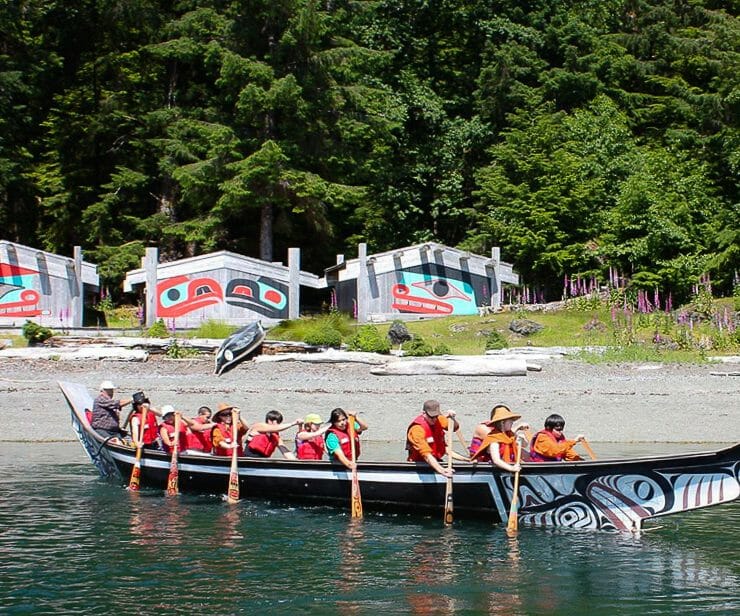
The Haida culture camp at T’aalan Stl’ang takes place on the north end of Haida Gwaii in the Duu Guusd Heritage Site. The Swan Bay culture camp occurs within Gwaii Haanas National Park Reserve and Haida Heritage Site.
At a Glance
Forty years ago, the Haida Nation set out to reconnect youth with Haida culture after colonization cleaved many citizens from their values and practices. In 1978, the Nation created the first Rediscovery camp, which served as a blueprint for 34 camps across the globe that unite young people with the cultural practices, values, and history of their ancestors.
Today, over 2000 Haida and non-Haida youth have attended multi-day culture camps on Haida Gwaii at T’aalan Stl’ang (Lepas Bay) and ‘Laanaa DaaGang.nga (Swan Bay). The camps are a place free of distraction where young people gain a set of skills, based in Haida values, that will support them throughout their lives.
The culture camps are revitalizing Haida culture and creating the next generation of leaders who understand how to care for and sustain the lands and waters of Haida Gwaii, as the K‘aay.yas (Elders) did before them.
A Beginning at T’aalan Stl’ang (Lepas Bay)
“How many feet have felt the wind whip the waves of the Pacific and the silky sand of T’aalan Stl’ang between their toes?” The question is asked by Thom Henley, or Yaahl Hlaagaay Gwii Kaas (Raven Walks Around the World)—the name he was given after his formal adoption by the Haida Nation.
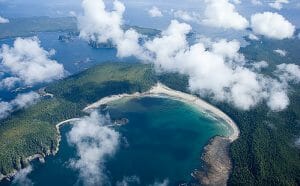
T’aalan Stl’ang is a crescent-shaped beach of white sand in the Duu Guusd Haida Heritage Site, along the northwest coast of Haida Gwaii. It was here that Henley, with the permission of Old Massett Village Council, built a cabin that would become the first staff headquarters at a Haida culture camp that became known as T’aalan Stl’ang Rediscovery Camp.
200 years prior, in nearly the same location, the Haida first encountered European colonizers, when they paddled out from Langara Island to meet and trade with Spanish boats. In the years that followed, the Haida resisted the destructive impacts of colonization, imparted through disease, destruction, and cultural genocide.
“We come from a strong, Haida people that were colonized; their language was taken away, and how they gather foods,” says Naajuuwa (Missy McDonald), a Skidegate Band Council Councillor. She recalls that her nanaay (grandmother), moved away from Haida Gwaii and started telling people she was Italian. “She refused to acknowledge who she was.”
How many feet have felt the wind whip the waves of the Pacific and the silky sand of T’aalan Stl’ang between their toes?
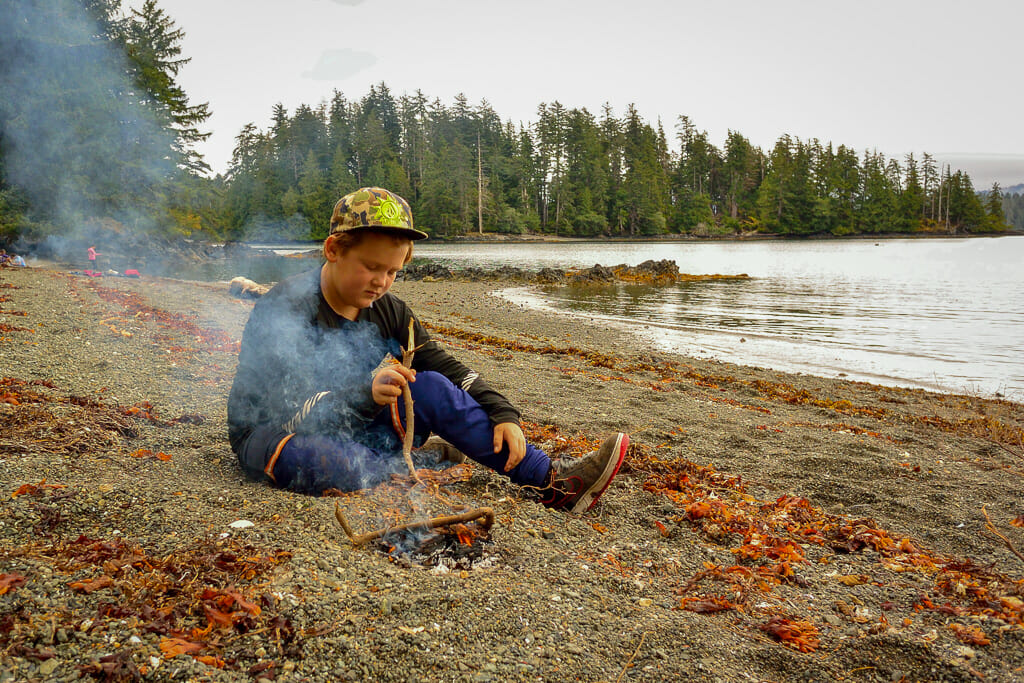
It was the context of colonization, that Henly, along with Haida leaders (including Gidansda Guujaaw, Dan Helmer Jr., John Yeltatzie; and Paul George) and K‘aay.yas (Elders) pondered how to reconnect Haida citizens with the culture and values that had supported them for millennia. Haida values like yahguudanga (respect for everything) and gina ‘waadluux̱an gud ad kwagid (everything depends on everything else) ensured the lands and waters of Haida Gwaii were carefully stewarded and thus able to offer food, shelter, and medicine in return.
Haida leadership determined that cultural revitalization must start with the Nation’s youth. And what better way to reconnect with culture than by spending time walking the silky sands of T’aalan Stl’ang? For the next four years, the Haida worked to develop the first culture camp which would take place at T’aalan Stl’ang, in 1978, with 32 participants.
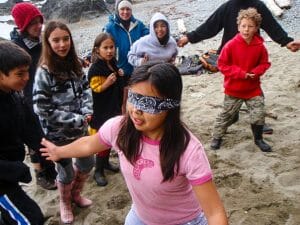
Since that time, the Haida Rediscovery Camp has become a global model for cultural revitalization. Today, 34 Rediscovery camps can be found in Canada, the United States, England, Sweden, Norway, and Thailand. On Haida Gwaii, well over 2000 youth have attended the culture camps that now take place on the islands. Two other camps have been established on-islands: Swan Bay Rediscovery Camp and Mount Moresby Adventure Camp.
Their impacts are plain to see for anyone who looks. What Haida leaders dreamed of—Haida citizens reconnected to their culture—is becoming a reality. Naajuuwa (Missy McDonald), who also is also on the board of directors for Swan Bay Rediscovery, says starting with the youngest members of the community is essential. “Because they are at the point that is the most vulnerable, but the most influential, you can help get that culture back into them, and break that cycle of colonization.”
We come from a strong, Haida people that were colonized; their language was taken away, and how they gather foods.
Every Penny Counts – Resourcing Cultural Rediscovery
In 2011, the Council of the Haida Nation recognized the need to inject fresh energy into the camps in the form of funding. Two years prior, the Nation had signed Kunst’aa Guu/Kunst’aayah Reconciliation Protocol. The landmark protocol helped protect 53 per cent of the Haida Gwaii’s land-base, and 72 per cent of its foreshore. It also ensured co-management and decision making for all the lands and waters of Haida Gwaii.
The co-management agreement meant that the stewardship responsibility of Haida Gwaii was returning to the people who had managed it for millennia. The Nation’s leadership recognized that the values being instilled in youth through the Rediscovery camps were essential to developing a workforce with the ability to effectively steward their territories.
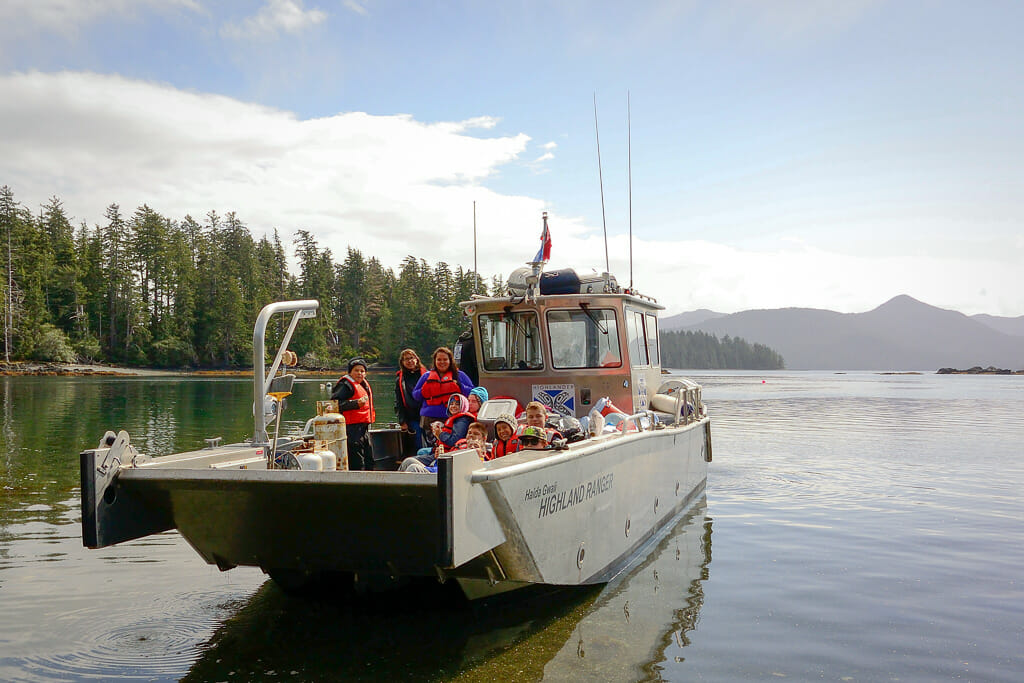
Taaw.ga Halaa’ Leeyga (May Russ), hereditary leader of Maaman Gitanee and senior administrator for the Nation, connected with Coast Funds to use conservation finance to support the culture camps at ‘Laanaa DaaGang.nga (Swan Bay) and T’aalan Stl’ang (Lepas Bay). The two camps had operated independently in previous years, but between 2011 and 2015 coordinated and shared resources allowing them to provide increased cultural, stewardship, and leadership programing at each camp.

The financing, procured through Great Bear Rainforest agreement negotiations, made a significant difference to being able to effectively run the camps. “Every penny is so precious,” says Xitwan Jadaa (Rosemary Hart), a member of the steering committee for the culture camp at T’alaan Stl’ang. As an example, Xitwan Jadaa (Rosemary Hart) points to the cost for transporting youth, crew, and gear to the remote location: $5,000 for a roundtrip journey.
Xiihliikingang (April Churchill), who manages the Swan Bay camp, agrees. “Boy it’s expensive to run those camps,” she says. “I think it’s $2,500 per student.” But both camps are supported by the community, and the various levels of government on Haida Gwaii. Along with Coast Funds (who supported the camps between 2011 and 2015), camp costs are subsidized for youth by organizations including the Gwaii Trust Society, Council of the Haida Nation, Haida Child and Family Services, Archipelago Management Board, HlGaagilda Skidegate Band Council, theOld Massett Village Council, and the Haida Gwaii Watchmen Program.
From North to South: T’aalan Stl’ang and ‘Laanaa DaaGang.nga
The culture camps at T’aalan Stl’ang (Lepas Bay) and ‘Laanaa DaaGang.nga (Swan Bay) have a combined 53 years of providing cultural connection for youth. Camp managers and advisors have worked to find the most effective ways of providing hands-on activities where youth can learn important cultural, stewardship, survival, health, physical, and social development skills.

The Rediscovery camp at T’aalan Stl’ang serves Haida and non-Haida youth from the northern communities on Haida Gwaii: Gaw (Old Massett), Taaw (Tow Hill), and Gamadiis (Port Clements). The camp is now run through Old Massett Village Council and led through a steering committee which consists of two community members (7idansuu Jim Hart, hereditary chief of Staastas, and Xitwan Jadaa Rosemary Hart), one representative from the Council of the Haida Nation, and one from Old Massett Village Council. Kwiigee (Monica Brown), Health Director for the Old Massett Health Council, oversees the operation of the program.
Youth attending the camp will arrive by boat at K’yuusda, where the Haida Guardian Watchmen have a cabin (a project also supported through the Coast Funds’ conservation endowment fund) and begin a 30-minute trek to T’aalan Stl’ang. Xitwan Jadaa (Rosemary Hart) says the Guardians always help the participants with packing supplies through the long trail to the west coast of the island.
Though the original cabin built by Thom Henly in 1974 no longer stands, there are now four bunkhouses and a cookhouse built in the Haida longhouse style. “Seeing the buildings snugged together and looking past them to the sea, it is possible to imagine what an ancient Haida village might have looked like,” writes journalist Ian Gill, in his book on Gidansda Guujaaw, All That We Say is Ours.
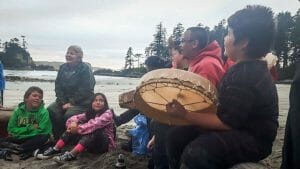
“The kids learn about the culture and the land,” says Xitwan Jadaa (Rosemary Hart). She points to a number of activities that support the growth of the teens and pre-teens who attend the camps each year. They visit the triple mortuary pole in K’yuusda village to learn about Haida heritage and the impacts of colonization; they receive Haida language lessons formally and through use of the language by camp directors; they do food harvesting and help with the day-to-day tasks of running the camp; they spend days hiking along the wild west coast of the island, carrying with them everything they need.
Camp participant surveys from 2011 indicate that youth enjoyed the experience immensely. Favourite memories include: clam digging, learning how to gut and smoke fish, visiting an historic Haida village site at K’yuusda, swimming, and hiking.
The Swan Bay Rediscovery Camp has been in operation since 2003, serving the communities at the south end of Haida Gwaii: Tll.aal (Tlell), HlGaagilda (Skidegate), Daajing Giids (Queen Charlotte), and Sandspit. The program is overseen by Swan Bay Rediscovery Society, and managed by Xiihliikingang (April Churchill), former Vice President of the Council of the Haida Nation, and an accomplished Haida weaver.
The camp takes place in Gwaii Haanas, a National Park Reserve, National Marine Conservation Area Reserve, and Haida Heritage Site. The camp immerses participants in outdoor activities to support development of cultural, stewardship, survival, health, physical, and social skills and knowledge.

The youth at ‘Laanaa DaaGang.nga (Swan Bay) are able to connect with different professionals who work in Gwaii Haanas, including archeologists, scientists, and the Haida Gwaii Guardian Watchmen. From these experts they learn introductory archeology, ethno-botany, and beach biology. They are able to visit sites of ecological and cultural importance like T’aanuu Llnagaay (Tanu), K’uuna Llnagaay (Skedans), SGang Gwaay (Anthony Island), Gandll K’in Gwaay.yaay (Hotspring Island), and Hlk’yah GawGa (Windy Bay).
It is something that young people carry with them. And it is an ideal that every person who has been touched by the program carries with them for the rest of their lives.

“They get a rounded education,” says Xiihliikingang (April Churchill), who has managed the Swan Bay program for four years. She says there is also an emphasis on learning to navigate in the elements. “Reading the tides, reading the skies, those are things they learn there because they have to move about by zodiac,” she says.
Xiihliikingang (April Churchill) also describes Wanagan time, which the youth participate in every day. “They sit down and they journal, or draw, or whatever, and they do that by themselves.” Each day they get further and further apart, she says, until they are ready to spend a night alone. That night is referred to in the Rediscovery lexicon as a “solo.”

The intention of the solo is for youth “to become independent and to overcome their personal challenges.” The skills taught to youth help them thrive alone in the wilderness of Haida Gwaii. “They go out and they have to build a fire with one match,” says Xiihliikingang (April Churchill). “They’re all by themselves and they have to get through that night.”
Participants at both T’aalan Stl’ang and Swan Bay participate in the solo, which is followed the next evening by a celebration where youth vote to decide the recipient of the Guudang Xyuuwid (Stone Ribs) award. Based on a Haida supernatural being who saved the people of Hlgaadaan from the terror of K‘aaGwaay (a five-finned sea monster), the award is given to the individual who underwent a dramatic transformation at camp, and best embodied Haida values.
Haida artist K’aaGwaay (Gwaai Edenshaw)—who attended the Rediscovery Camp as a young man, and has participated as a program facilitator—says of the award, “it is something that young people carry with them. And it is an ideal that every person who has been touched by the program carries with them for the rest of their lives.”
Teaching Haida Values, Learning Stewardship
“The Haida people are the Haida people because of the land and the sea around us,” says Xiihliikingang (April Churchill) in a 2015 interview. “We are a product of it—we are a part of it and we are connected to it. If we don’t protect it, there won’t be an ‘us’ anymore.” The camps’ connection to the well-being of Haida Gwaii is undeniable, because stewardship is at the core of Haida values.
Youth at both camps participate in taking care of their camp space. At both camps, beach cleanup is a frequent event, and participants remove invasive plant species from the surrounding landscape. Many of the outdoor skills taught at camp help in the creation of a skilled labour force to feed into the many stewardship positions available on Haida Gwaii. And, working closely with groups like the Haida Gwaii Watchmen demonstrates to youth just what types of jobs are available.
Naajuuwa (Missy McDonald) agrees that stewardship is woven into every aspect of the culture camps, from food and learning about plant uses, to weaving lessons. Each day at ‘Laanaa DaaGang.nga (Swan Bay) begins with a discussion of new Haida stewardship law, which is reinforced through the activities of the day.
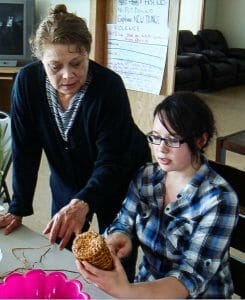
Naajuuwa (Missy McDonald) refers to Xiihliikingang (April Churchill)’s weaving classes as an example. “She talks about interconnectivity between the plants, the people, and how we are all connected. She talks about how to sustain things.” A key lesson is only taking as much as you need. “So when you have guuding.ngaay (urchins), you learn to take only what you need,” Naajuuwa (Missy McDonald) says.
Alysha Mattice, who attended the camp T’aalan Stl’ang recalls camp activities fondly: “[They] made me feel like I was taking initiative. Hopefully our initiative to clean the beach will affect others…. We have learned how the introduced species affect indigenous species and environments along the islands.”
The Haida people are the Haida people because of the land and the sea around us. We are a product of it—we are a part of it and we are connected to it. If we don’t protect it, there won’t be an ‘us’ anymore.
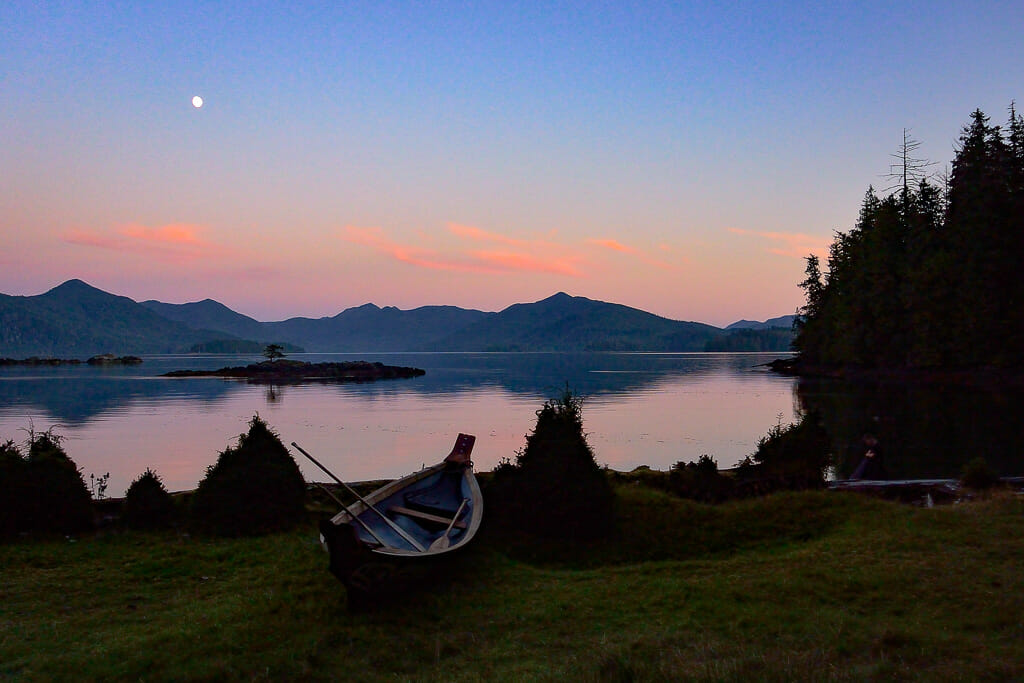
Since 2005, the Council of the Haida Nation has also managed a Youth Stewardship Program, helping to grow the pool of skilled labour available for natural resource and stewardship jobs. The program is jointly funded by Parks Canada, the Council of the Haida Nation, and the Province of British Columbia, and between 2011 and 2014, was also supported with conservation finance from Coast Funds.
The program hires secondary and post-secondary students from Haida Gwaii and places them in a variety of stewardship positions, partnering with businesses and organizations on the Islands. In 2013, for example, the students worked with eight partner organizations over six weeks to complete 14 separate work projects.

Each project was designed to provide a tangible benefit to the partner, but also to teach the students about education and stewardship career paths available on Haida Gwaii. Projects took place in a variety of sectors including forestry, non-timber forest products, fisheries, recreation, tourism, wildlife management, and cultural access.
“The big picture goal of the Youth Stewardship Program,” wrote Taaw.ga Halaa’ Leeyga (May Russ) in 2011, “is to engage and inspire the Island’s youth to pursue an education and become the future of resource management on Haida Gwaii.”
The stewardship focus of the camps and the stewardship program has paid off, says Xiihliikingang (April Churchill). “We have kids who now have their biology degrees, have gotten scholarships, those are people from Swan Bay who were given that kind of support.”
A New Generation of Leaders on Haida Gwaii
Without a doubt, the Rediscovery Camps on Haida Gwaii are changing the way a new generation of Haida citizens and non-Haida residents of Haida Gwaii relate to themselves, each other, and the land and waters which sustain them.

Naajuuwa (Missy McDonald) says she was lucky enough to be raised by her great-grandmother who was never forced to attend residential school, and remained connected to Haida values as a result. “She instilled the values of being on the land and growing food and of only taking so much from a plant,” recalls Naajuuwa.
But many Haida were not so lucky, she says, and this is where the camp is so important. “To continue having that access to a place where a child can go and there’s not electronics, and they learn how to socialize and they learn how to depend on each other, they can keep going and learn how to be self-sufficient,” she points out.
Naajuuwa (Missy McDonald) says the camps are especially important in the context of Haida oral tradition. “That’s something of what we are as Haida,” she says. “Our food gathering and our knowledge is all passed down verbally.” The camps provide a space where that knowledge transfer can take place.
K‘aay.yas (Elders) play a significant role in making that happen, and have done right from the first Rediscovery camp. Thom Henley, in an interview, says that “Rediscovery couldn’t possibly have gotten off the ground without the [Haida] Elders legitimizing it.”
But K‘aay.yas (Elders) have done more than provide their support for the camp from afar, they have travelled the three-and-a-half-hour boat ride to be with the youth and impart their knowledge to the next generation of leaders. Xitwan Jadaa (Rosemary Hart) says the K‘aay.yas are integral to the program. “If you don’t have the Elders out there, you don’t have the grounding that they provide.”
These cool teenagers got off the boat, they were hugging everybody, thanking everybody. It was a completely different bunch of people.
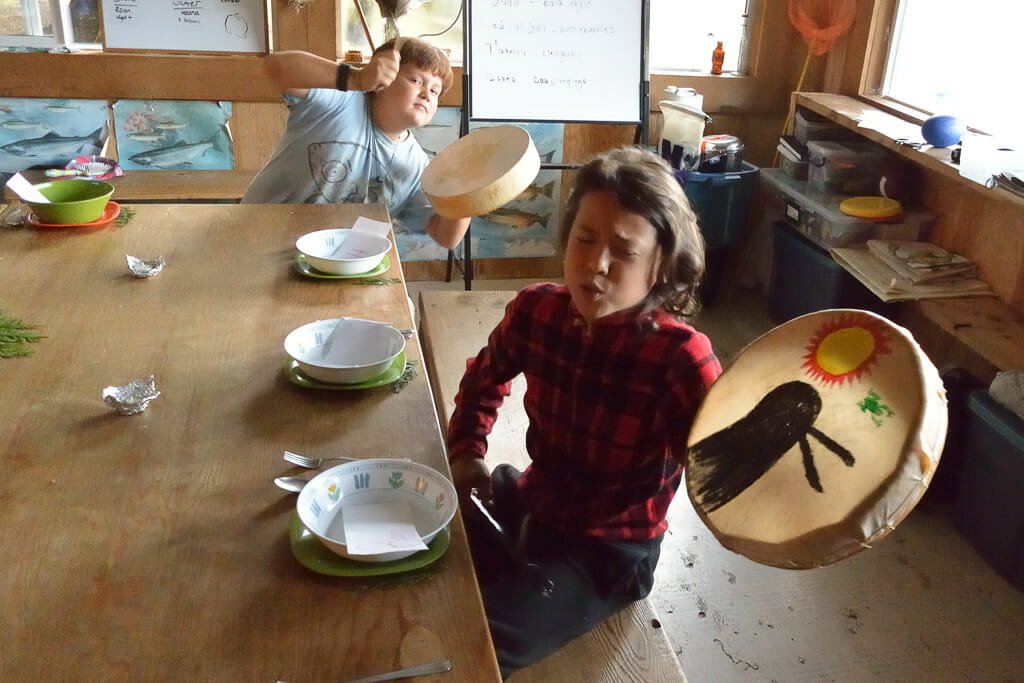
Growth of self-confidence is one of the most significant outcomes of the camps. Xiihliikingang (April Churchill) recalls the first time she went down to the dock to help camp staff on their turnaround day, when one group of youth finishes the camp and another begins. She says the high school kids that she sent off two weeks prior were completely transformed. “These cool teenagers got off the boat, they were hugging everybody, thanking everybody. It was a completely different bunch of people,” she recalls. “And they come into the community and they become leaders themselves and within their peer groups.”
Xiihliikingang (April Churchill) says one of the core intentions of connecting youth to their culture is to “help them gain the strength to overcome their personal issues so that they may go on to do other things.” The camps are creating the next generation of Haida leaders.
The benefits of the cultural program are not restricted to Haida youth. The camps are open to Haida and non-Haida alike. Xitwan Jadaa (Rosemary Hart) says that’s one of the best things about the camps. “It’s all about connecting kids when they’re young. They just take everyone for who they are, not the colour of their skin,” she says.
Thom Henley says the camps are a global model for reconciliation. At a speech prepared for the 40th anniversary celebration of the Rediscovery Camp at T’aalan Stl’ang, Henley wrote “As anyone who lives on the island knows, it’s not perfect. But I can assure you there is nowhere in the 133 countries I have travelled where relations between people of different cultures is more harmonious and respectful. Rediscovery has played a huge role in that.”

Challenges and Lessons Learned
Staff Turnover
One of the biggest challenges facing the managers of Haida culture camps is coping with staff turnover. Contributing to high turnover are the remote location, the seasonal nature of the work, and the demands of the job. As Xitwan Jadaa (Rosemary Hart) says “when you’re working with youth, it’s a 24-hour gig.”
Staff, managers, and advisors have discovered that the best way to deal with turnover is to develop strong operating manuals. Xiihliikingang (April Churchill) has been developing a procedures manual for the camp at ‘Laanaa DaaGang.nga (Swan Bay). She says that with new staff each year, mistakes do get made, but views them as an opportunity to improve the procedures manual. “I tell the staff not to worry about mistakes, because they teach us. Because you made that mistake we know that is not self-evident; we know we have to put that into the manual.”
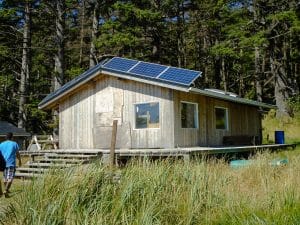
Accommodating K‘aay.yas (Elders)
K‘aay.yas (Elders) are an essential component of the culture camps, but because the camps are so remote, it can be difficult for K‘aay.yas to spend time there.
To help support K‘aay.yas , the Swan Bay camp is working with Archipelago Management Board to build an Elders complex. The building will provide a space where K‘aay.yas (Elders) can rest throughout the day, have easy access to bathroom facilities, and have some privacy away from the energy of camp activities.
When you’re working with youth, it’s a 24-hour gig.
Engage with Local Business
Finding ways to engage with local businesses has been an ongoing goal for the camp at T’aalan Stl’ang. The northern part of Haida Gwaii is home to a number of fishing lodges, many who contribute fish for camp activities like teaching cultural preparations of the fish.
In previous years, the camps received solar power through a partnership between Swiilawiid Sustainability Society, a local non-profit; Bullfrog Power; and a grant from Gwaii Trust Society.
Cost
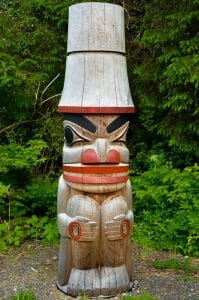
One of the biggest barriers to overcome when organizing the camps is cost. Both camps estimate the cost per attendee at approximately $2,500. The camp fees are subsidized through partnerships with Gwaii Trust, the Council of the Haida Nation, and conservation finance available through Coast Funds. Xiihliikingang (April Churchill) says the cost is a challenge, but support for the camps is so great that the communities find a way to make them happen each year.
Scheduling
Both camps offer programming for teens and pre-teens. Naajuuwa (Missy McDonald) says they have learned at Swan Bay Rediscovery that it’s best to offer the teen camps early and late in the season. “Most of the teenagers have jobs,” she says. “So we have to really make the teen camps around certain times that get them there.”
Environmental Outcomes
By connecting Haida Gwaii youth with Haida values, the camps, which take place in the Duu Guusd Heritage Site/Conservancy and Gwaii Haanas National Park Reserve and Haida Heritage Site, are providing them a deep understanding of stewardship of the lands and waters of the region. Taaw.ga Halaa’ Leeyga (May Russ) wrote, in a Coast Funds report, “The aim of the camps is to get the youth back on the lands and waters of Haida Gwaii and to give them the experience required to understand the environment and to learn how our ancestors survived on the lands and waters.”
Additionally, the camps operate on solar power, decreasing emissions and teaching environmental values. Xitwan Jadaa (Rosemary Hart) says that having the camps powered by solar energy provides an opportunity for youth to learn: “Being off-grid, this will be a great opportunity to teach our youth about energy. We’re so used to walking into a room, flicking on a switch and having light. We’re totally unaware of where our energy comes from.”
Learn more about protected area outcomes.
Economic Outcomes
The culture camps at T’aalan Stl’ang and ‘Laanaa DaaGang.nga contribute to the economic well-being of Haida Gwaii in a number of ways. They bolster the local economy by buying goods and services locally, whether that is camp supplies, or supporting a local transport company to carry staff, participants, and gear to the remote locations.
Between 2011 and 2015, the camps and youth stewardship program that received support from Coast Funds were able to leverage $1.30 for every $1.00 from Coast Funds. Partnerships are also an integral outcome of the camps: between the camps and the youth stewardship program, 26 partnerships were formed with local, provincial, and national governments, non-profits, and local businesses.
Learn more about partnership outcomes.
Cultural Outcomes
At each camp, knowledge transfer between K‘aay.yas (Elders) and youth takes place, which has innumerable benefits including: cultural revitalization, language transfer, and protecting and documenting oral histories.
The camps also help protect and identify important Haida cultural assets. Youth visit important cultural spaces like the triple mortuary pole at K’yuusda village, and village sites throughout Gwaii Haanas including century-old remains of multi-tiered longhouses dug into the earth at T’aanuu Llnagaay (Tanu), K’uuna Llnagaay (Skedans), SGang Gwaay (Anthony Island), Gandll K’in Gwaay.yaay (Hotspring Island), and Hlk’yah GawGa (Windy Bay).
Language is also a big part of the camps, and the Haida language is used whenever possible. At T’aalan Stl’ang, each morning begins with a wake-up song sung in X̱aad Kil. Access to traditional food is also a daily part of camp life: participants learn to identify, harvest, and prepare Haida staples, and at the end of each season, a feast is held in the community.
Naajuuwa (Missy McDonald) also points out that cultural benefits resonate beyond the confines of camp: “[Youth] learn something and they bring it back to their parents or their grandparents that have not had that experience, and have disjointed themselves from the culture.”
Learn more about Elders and youth outcomes.
Social Outcomes
The culture camps provide significant benefit to youth of Haida Gwaii. Some seasons have even featured a resume-writing workshop, helping provide youth with concrete employment skills.
The camps and the youth stewardship program (between 2011 and 2015) created three new permanent jobs and 19 seasonal positions, contributing over $150,000 to local, family-supporting salaries. Additionally, a total of 900 training days were provided to 23 people in the areas of stewardship and leadership.
Learn more about training outcomes.
Contacts
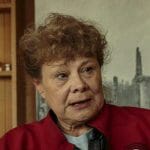
Xiihliikingang (April Churchill)
Program Manager
Swan Bay Rediscovery Camp
Xitwan Jadaa (Rosemary Hart)
Committee Member
Haida Gwaii Rediscovery Steering Committee
Between 2011 and 2015, Coast Conservation Endowment Fund approved funding for five separate projects totalling $280,000 towards the Haida Gwaii Youth Stewardship Program and culture camps at ‘Laanaa DaaGang.nga (Swan Bay) and T’aalan Stl’ang (Lepas Bay).
Partnerships
- Archipelago Management Board
- BC Parks
- BC Timber Sales
- Bullfrog Power
- Council of the Haida Nation
- Delkatla Wildlife Sanctuary
- Fisheries and Oceans Canada
- Government of Canada
- Gowgaia Institute
- Gwaii Haanas National Park Reserve and Haida Heritage Site
- Gwaii Trust Society
- Athlii Gwaii Legacy Trust
- Haida Child & Family Services
- Haida Gwaii Watchmen Program
- Haida Gwaii Higher Education Society
- Hecate Strait Employment Development Society
- Ministry of Environment and Parks
- Ministry of Forests Region & District Contacts
- North Pacific Kelp
- Northwest Invasive Plant Council
- Niislaa Naay Health Updates
- Old Massett Village Council
- Parks Canada
- Royal Canadian Mounted Police
- Skidegate Band Council
- Skidegate Health Centre
- Swan Bay Rediscovery Society
- Swiilawiid Sustainability Society
- Taan Forest LP
- Tlell Watershed Society
- Vancouver Aboriginal Community Policing Centre
Online Resources
- Swan Bay Rediscovery Camp
Swan Bay Rediscovery Camp Website - Rediscovery Haida Gwaii
Rediscovery Camp at T’aalan Stl’ang - Swan Bay Rediscovery Camp
Parks Canada website for Swan Bay Rediscovery Camp - Council of the Haida Nation
Council of the Haida Nation website - Skidegate Band Council
Skidegate Band Council website - Old Massett Village Council
Old Massett Village Council website - Rediscovery Family of Camps
34 Rediscovery camps worldwide - Duu Guusd Heritage Site
Information on Duu Guusd Haida Heritage Site - Lepas Bay Ecological Reserve
Information on Lepas Bay Ecological Reserve - Kunst’aa Guu–Kunst’aayah — Moving to a Sustainable Future Together
Coast Funds, 2016 - Structure of Coast Funds
About Coast Funds economic and conservation funds - Establishing the Great Bear Rainforest agreements
History of Great Bear Rainforest agreements - Gwaii Trust Society
Gwaii Trust Society website - Haida Child and Family Services
Haida Child and Family Services website - Haida Gwaii Watchmen Program
Information on the Haida Gwaii Watchmen Program - All That We Say is Ours
Ian Gill, 2009 - Gwaii Haanas
Gwaii Haanas National Park Reserve, National Marine Conservation Area Reserve, and Haida Heritage Site - Gwaai Edenshaw
Haida artist, Gwaai Edenshaw - Postcard from Haida Gwaii: Where Sustainability Dates Back 13,000 Years
Rainforest Alliance, July 2015 - A Q&A with Environmentalist Thom Henley
The Tyee, November 2017 - Haida Gwaii youth camps going solar
Haida Gwaii Observer, July 2017 - Swiilawiid Sustainability
Swiilawiid Sustainability website - Three Haida Gwaii youth camps to go solar thanks to Bullfrog Power and Swiilawiid Sustainability Society partnership
Bullfrog Power, June 2017 - Connecting with Culture: Outdoor Camps on Haida Gwaii
Gwaii Trust, March 2017 - Youth stewardship program wrapping up for summer
Haida Gwaii Observer, August 2014 - Rediscovery: Ancient Pathways, New Directions
Thom Henley, 1996 - Rediscovery: A Short History
Haida Laas, September 2008 - Gwaii Haanas Report: Youth stewards visit Hlk’yah G̱awG̱a / Windy Bay
Haida Gwaii Observer, 2018 - Swan Bay Rediscovery Camp
Haida Gwaii Tourism, June 2012
Published On December 17, 2018 | Edited On April 1, 2025
